In the world of nonprofit fundraising, stories are more than just words on a page or images on a screen; they are the beating heart of your mission. They have the power to inspire, engage, and ignite action in ways that data and statistics alone cannot. Whether you’re striving to make a difference in your community, protect the environment, or provide a lifeline to those in need, your storytelling ability can mean the difference between a thriving and well-funded program and one that falls flat.
Below we’ll explore four things to consider in nonprofit storytelling:
- The narrative structure
- The content
- The medium
- The donor experience
Managing all of the moving pieces of your nonprofit can be tough; sharing your authentic story as a change-maker doesn’t have to be.
The Power of Storytelling in Fundraising
Humans are meaning-making creatures. We are constantly seeking purpose and significance in the world. One of the primary ways we do this is through story. We craft narratives that give structure and context to our experiences, allowing us to connect events, emotions, and ideas into coherent and relatable frameworks. Storytelling enables us to share, understand, and shape our own lives, as well as those of others, creating a rich tapestry of meaning and empathy in the process.
Now imagine your ideal donors. Who are they? What do they care about? Why do they care about it? How do they spend their money? How much do they give?
Some of you may know exactly who that is, and others may have no clue. That’s okay! Understanding this is a journey and it doesn’t happen overnight. Start by remaining curious, sending surveys, chatting with current donors and those who have shown interest. Once you have gathered and analyzed the data, you will have a better idea of how to craft a story that speaks to them.
At the end of the day, most donors just want to create meaningful change, and your job is to invite them into a larger story and provide an easy way to be a force for good! While your work is so important, remember that when fundraising, your donor is your hero; without them you cannot do what you do!
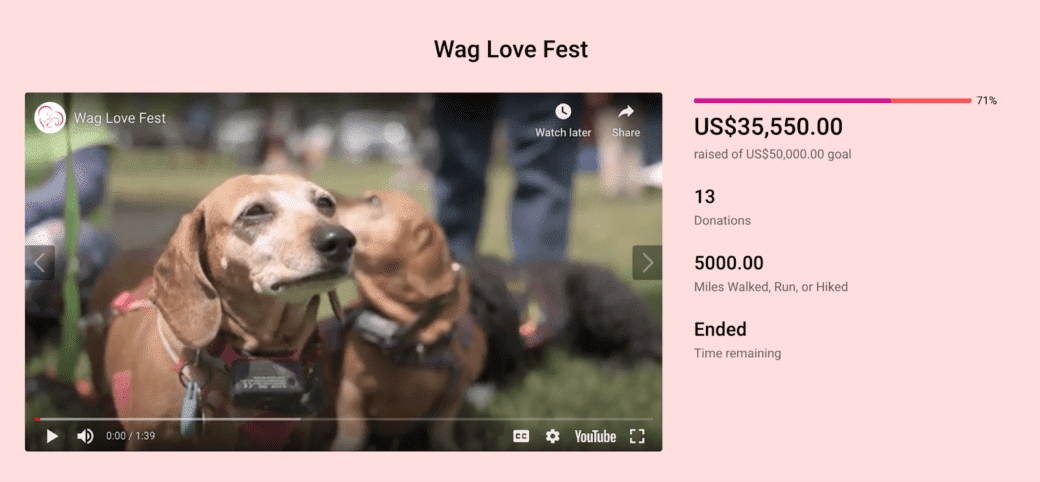
Take Wag Love Fest for example, they have identified their target donor: pet owners who have a very special bond with their furry friend and would do anything to see them live a long, healthy life! They created a touching video embedded into their campaign page that invites potential donors into a larger story.
The Narrative Structure
It is crucial to have narratives that center your donor as the hero as the Pixar and Storybrand frameworks invite us to do. As the fundraiser, you are simply a guide helping your donor find a way to make a meaningful impact in the world.
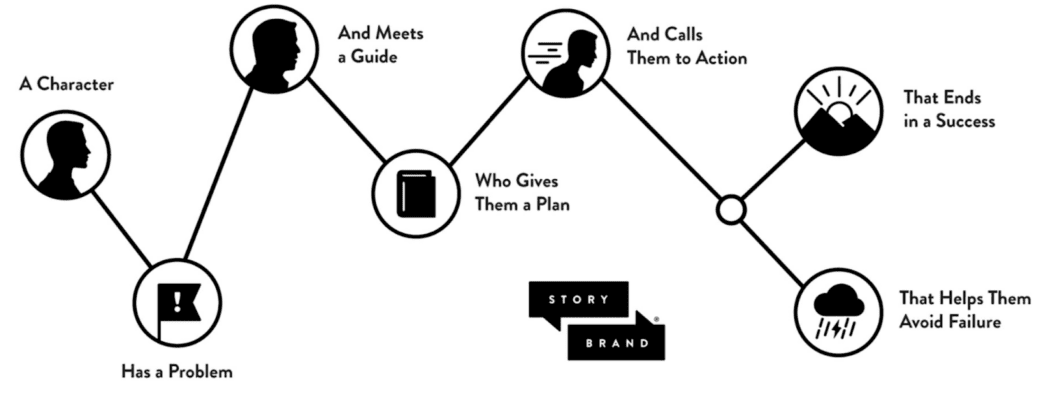
StoryBrand Framework
There are two major ways you can think about crafting stories, and you can test this through donor research and data analytics to see which is more successful for you.
1. Donor Based
A Donor Based narrative centers your supporters as a key part of your mission to create impact in the world.
You can see here that Miriam’s House uses the donor based brandscript to center the supporter as the hero by saying “you can help end the cycle of homelessness.”
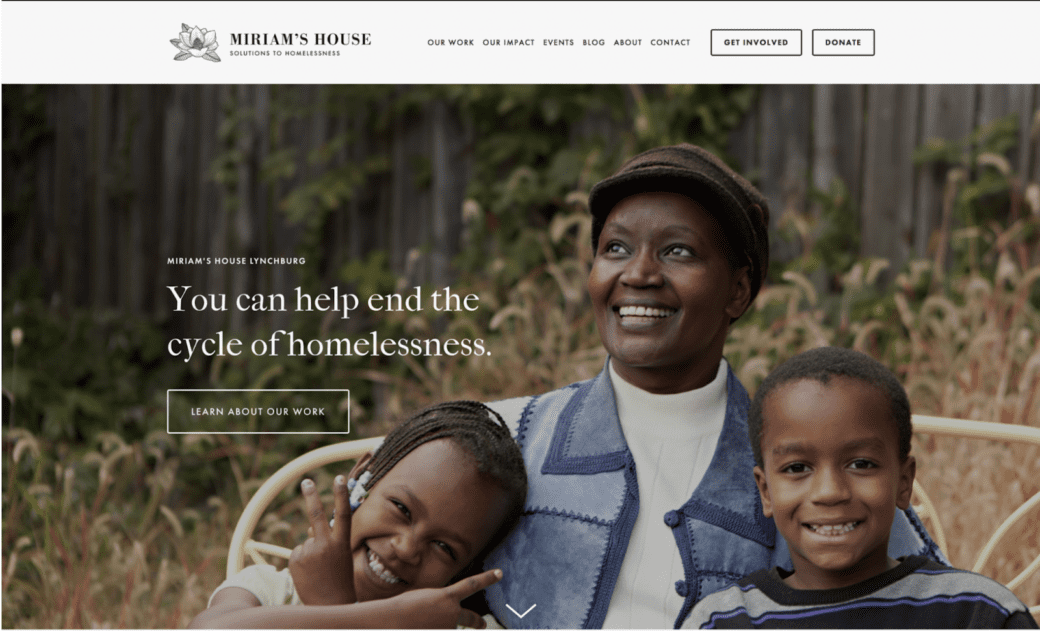
Another example is Raising Hope Dogs who centers the donor as the hero by stating “Give A Gift, Change A Life” exemplifying the necessary role the donor plays in their work.
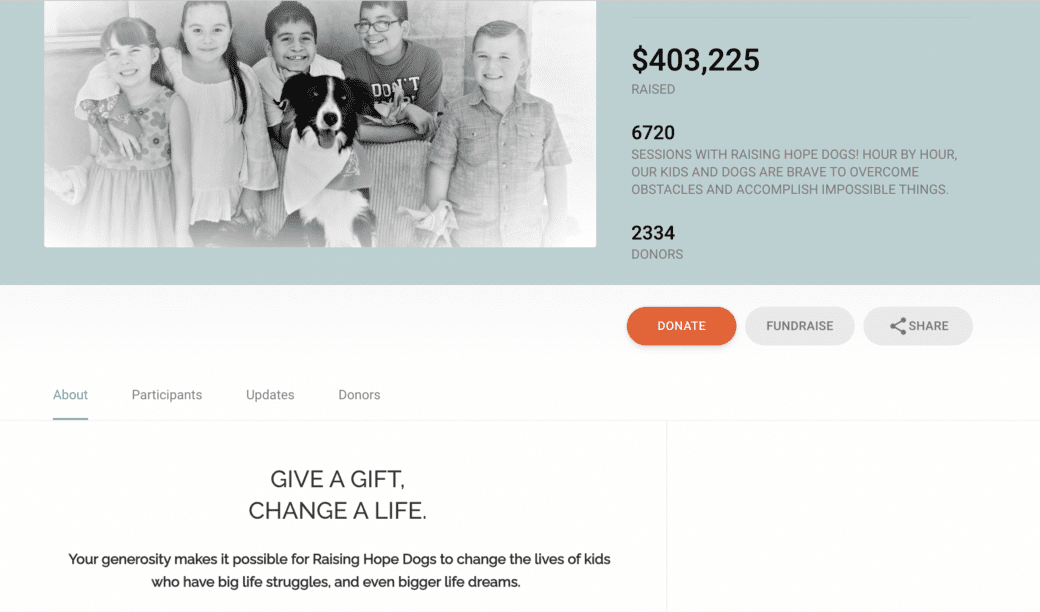
2. Mission Based
A mission based brandscript centers your beneficiaries and the work your nonprofit does.
For instance, below International Justice Mission centers those they serve as the hero of the story and invites donors to support them. You can see how they shared his story of going to rescue more children in the small text beneath the heading which makes him the hero of the narrative.
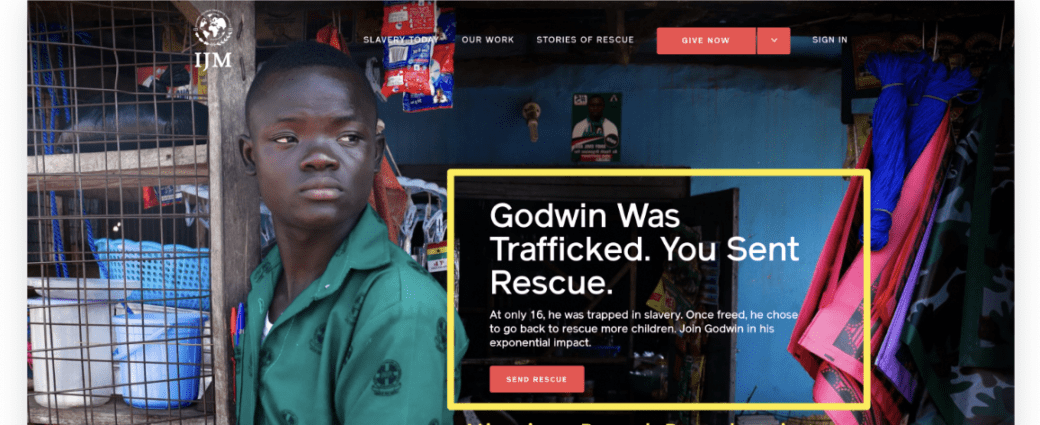
Other Considerations When Crafting Your Narrative
Here are a few things that I have learned over the years as a nonprofit fundraiser:
1. Fall In Love With Understanding Your Donors Problems
It is from that point that you will be able to craft and articulate compelling narratives that convert. Focus on who your donor is through segmentation, research and surveys. Find out what makes them give and what they care about. Empathize with them and show that you care. In your messaging use phrases like, “we understand” or “we get it” to connect with donors and make them feel seen and heard.
2. Clarify Your Message
“If you confuse you lose” is a common phrase used at StoryBrand. Create clear action steps and easy to navigate donation pages to ensure no donor gets lost in the process. With CauseVox’s site editor you can easily customize and brand your donation page so it is clear, easy to use and helps you raise more money in less time.
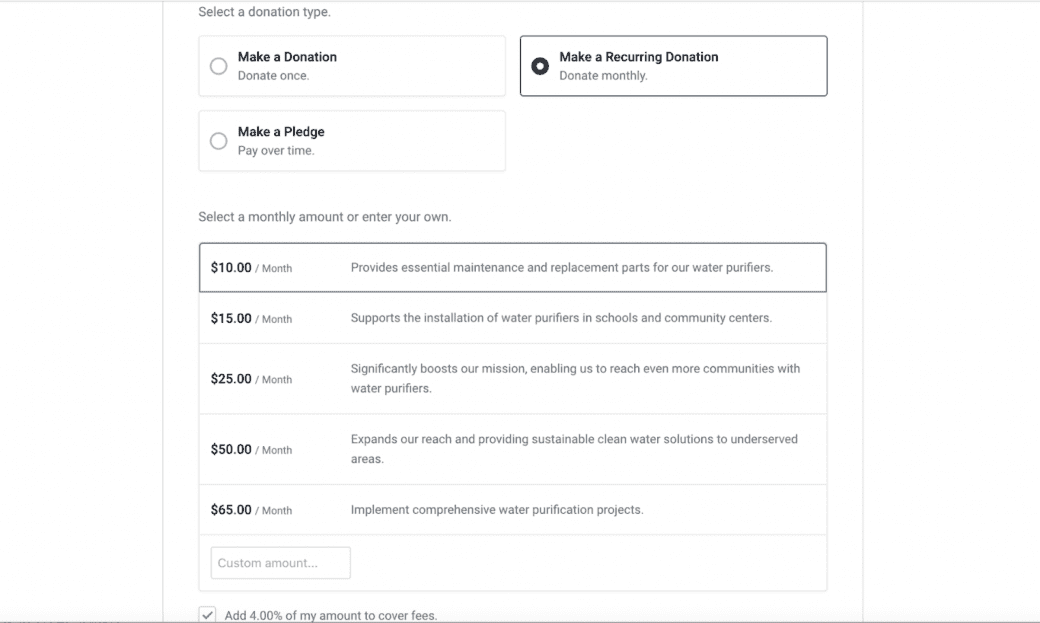
You can see here the clear, simple, functional donation page on the CauseVox site editor. The different customizable donation tiers also help you paint a story for your donor and show them exactly the impact they will be having.
3. Remember The Heroes
I cannot reiterate this enough! As nonprofit professionals, we know all the amazing work our organization is doing inside and out and we just want to share that with others. But the reality is, people are inspired to take action when they connect with the stories of those you work with or when they believe they can genuinely make a difference by supporting your cause.
Addressing these fundamental motivations is key, and by doing so, you’ll witness an increased conversion of donors. Find the balance between your mission-based and donor-based narrative and craft those stories effectively. You can try using the two different frameworks on different pages of your website, or in different campaigns to find what is most effective.

Volo Kids center their donors as the heroes who are making a difference.
The Content of Your Stories
In our 2023 CauseVox Giving Study, 39% of donors shared that testimonials from beneficiaries would boost their likelihood to donate. Personal stories have an undeniable impact on fundraising efforts. These narratives possess a unique ability to infuse authenticity and emotional connection into your campaigns, making them compelling and relatable. Let’s explore how personal stories can transform your fundraising efforts.
Authenticity
1. Real People, Real Impact
Personal stories are windows into real lives, real struggles, and real triumphs. When beneficiaries, volunteers, or staff members share their experiences, it adds an element of authenticity that donors can connect with. It demonstrates that your cause is tangible and that your organization is actively making a difference. We will touch on some ethical considerations in a moment, but the bottom line is stories convert people from strangers to supporters.
2. Credibility and Transparency
Our 2023 Giving Study found that donors–especially in the younger generation–are driven by impact and results and wish to see tangible outcomes from their contributions.Sharing personal stories demonstrates transparency and openness. It shows that your nonprofit is unafraid to showcase your work, both the beautiful and the difficult parts of it. This authenticity helps build trust among donors, knowing that their contributions are genuinely making a change in someone’s life.
Emotional Connection
1. Evoking Empathy
Personal stories have a remarkable ability to evoke empathy. When people read or hear about someone’s personal journey, they are more likely to put themselves in that person’s shoes, feeling their pain, their hopes, and their joys. This emotional connection can be a powerful motivator for giving.
2. Highlighting Impact
Stories showcase the direct impact of your organization’s work. When donors can see the real-life changes their contributions bring about, it adds an emotional layer to the act of giving. They are not just donating; they are participating in a story of transformation and hope.
3. Inspiring Action
Personal stories often serve as a call to action. When donors are moved emotionally, they are more likely to take action, whether it’s making a donation, sharing the story with their network, or getting involved as volunteers. Stories inspire people to be a part of the positive change they want to see in the world.
4. Building Lasting Connections
Donors who have been touched by a personal story are more likely to become long-term supporters. These stories create a profound connection between the donor and the cause. The emotional impact lingers, making them more likely to stay engaged and contribute over time. In fact, studies have shown that nonprofits who effectively use storytelling in their fundraising efforts have a donor retention rate of 45%, compared to 27% for organizations that do not focus on storytelling.
Measuring the Impact of Your Stories
Measuring impact in nonprofit storytelling is a crucial step toward understanding the tangible outcomes of your efforts. It involves evaluating the effectiveness of your narratives in terms of engagement, donor response, and, most importantly, the real-world change inspired by your stories.
By assessing key performance indicators such as donation metrics, audience engagement, and the direct impact on your organization’s mission, you gain valuable insights into the success of your storytelling initiatives. This data-driven approach not only demonstrates accountability to donors but also informs future storytelling strategies, ensuring that your narratives continue to resonate and drive positive change.
Ethical Storytelling Considerations
It is important to note that while story is incredibly impactful in converting donors, it can also be harmful to the beneficiaries we serve, especially if we do not co-create the narratives with them. When using beneficiary stories (as well as volunteers & staff for that matter) always seek consent before sharing anything publicly.
When creating stories, aim to promote truth over sensationalized content. Again, authenticity is key. It is unfair to your organization, donors, and beneficiaries if the stories we tell are so exaggerated that they don’t paint a picture of the reality you face everyday in creating change.
The best way to craft ethical stories is to ask those you serve what story they want told. Consider asking questions like, “What would you want the world to know?” or “what does our program mean to you?” to ensure that what is shared is genuine.
The Medium
Visual content holds the remarkable ability to immediately capture attention and evoke deep emotions. You know, those images and videos that tug at the heartstrings.
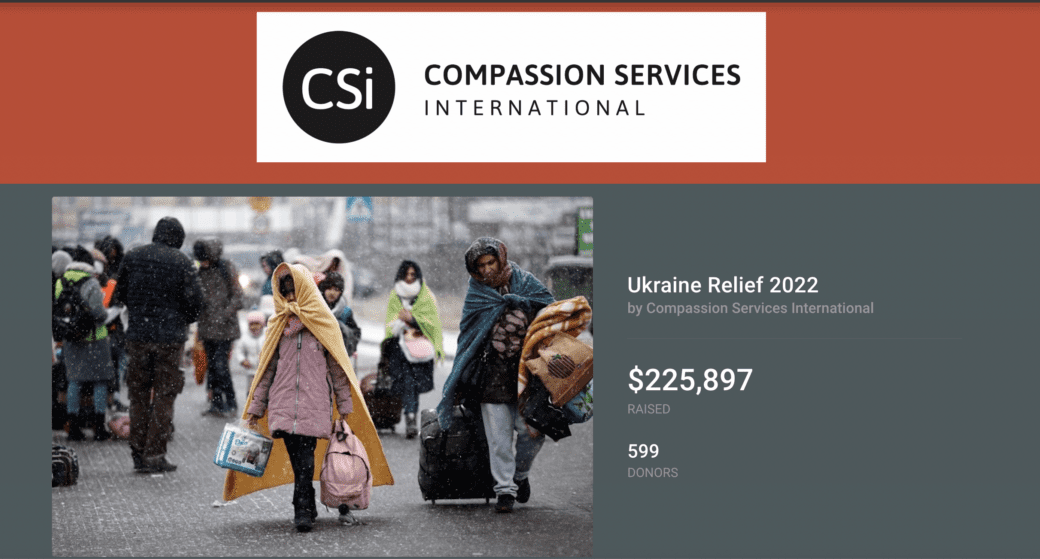
Compassion Services International used powerful photos and other storytelling techniques to raise a significant amount of money for Ukraine Relief.
Inspiring photos and videos of your impactful work in action is crucial, but so are the stats. In fact, 33% of donors say clear visuals like charts and images would increase their likelihood to donate. You can transform your statistics and figures into narratives that stir action. By using engaging infographics and data driven storytelling, you can portray the impact of contributions, painting a tangible picture of the real-world change that your generous donors can help bring about.

This infographic powerfully exhibits the unreported cases of sexual violence vs the reported through the size of the circles. It visually helps the reader grasp the extent of the problem.
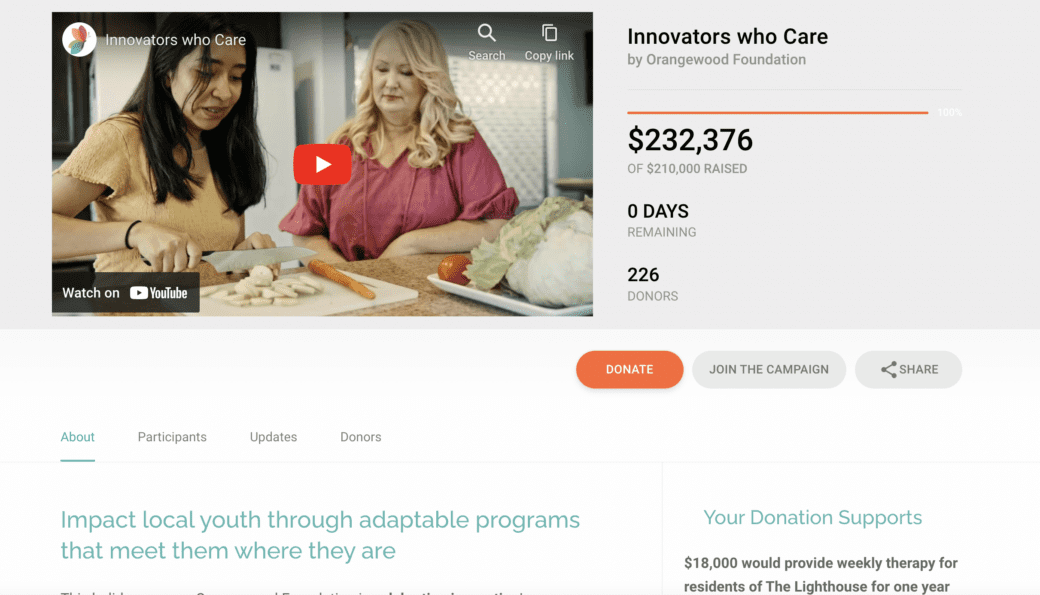
Innovators Who Care uses a short and powerful video to convey their impact.
The Donor Experience
As donors engage with your organization on your donation page, it’s not merely a transactional encounter—it’s an immersive storytelling experience. Just as every compelling story has a beginning, middle, and end, your donation page can guide donors through a seamless narrative that resonates with their emotions and motivations. Here are a few ways to use your donation page as a powerful storytelling tool.
1. Have A Captivating Introduction
The donor’s journey begins with the opening scene, your donation page’s introduction. Engage donors with a compelling hook—perhaps a powerful image, gripping infographic, a concise video, or a heartfelt testimonial. This introduction sets the tone for the story they are about to become a part of.
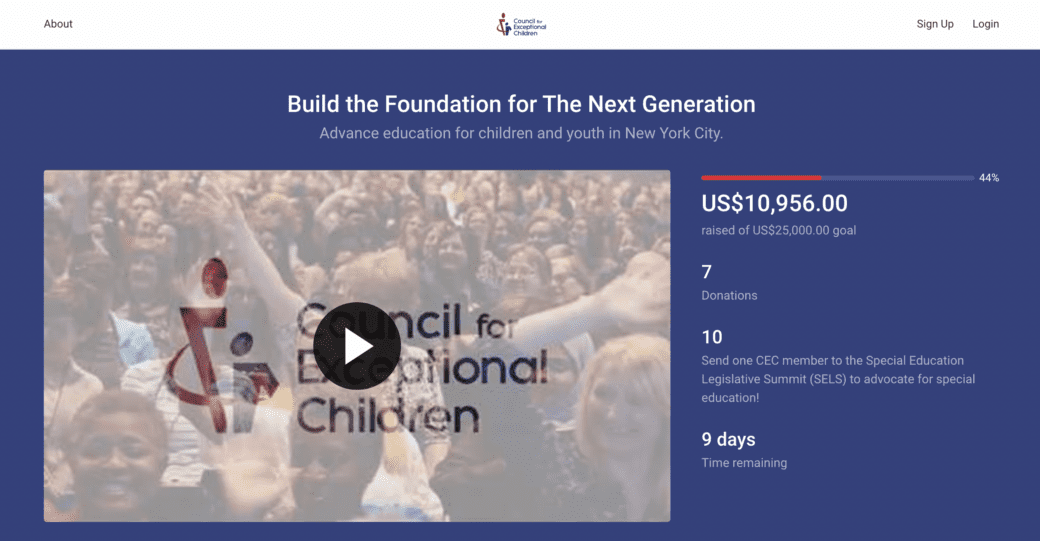
A heartfelt video on your donation page featuring beneficiaries expressing gratitude and sharing personal stories of transformation instantly connects donors to the impact they can be a part of.
2. Weave the Narrative
Your stories are your strength, and the intuitive design of the CauseVox site editor is your creative toolkit for weaving compelling narratives that deeply resonate with your audience. Effortlessly mix and match modules to construct captivating pages that precisely communicate your mission, vision, and impact. As donors scroll through your donation page, each section should seamlessly tell a story that reinforces your mission and highlights the significance of their contribution.
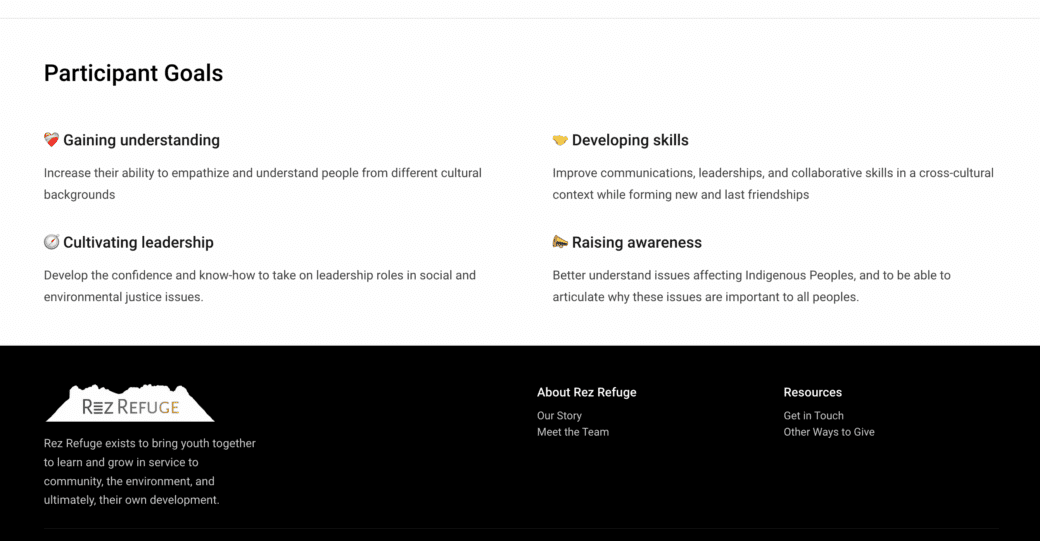
Rez Refuge breaks down the beneficiaries goals for the donor to paint a picture of what your support would help them achieve.
We’ve seen that donors are more encouraged to give (and give larger donations) when they know their donation’s impact. You can showcase impact through short, powerful statements that are attention grabbing and easy to read like Rez Refuge does. You can also share the change you are creating by attaching a dollar amount to it like Innovators Who Care.
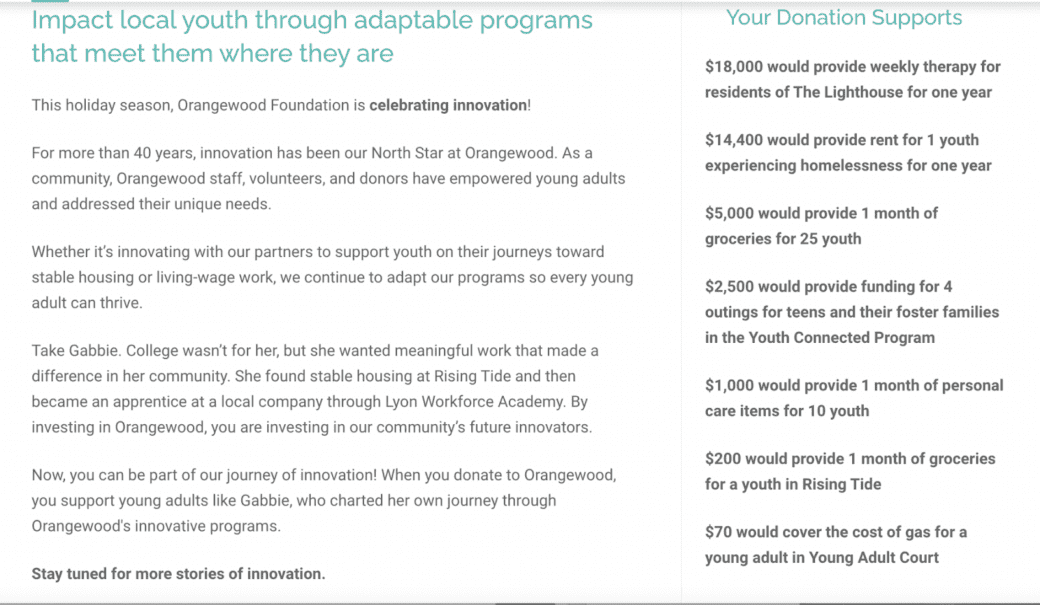
Innovators Who Care highlights the impact each dollar amount would have, inviting supporters into the story and clearly showing their impact.
3. Personalized Engagement
Invite donors to be active participants in your story. Incorporate personalized elements, such as the option for tribute donations. You can include a section where donors can share why they chose to support your cause or dedicate their donation to a loved one. This not only adds a personal touch but also enriches the collective narrative of your community coming together for a shared purpose.

Tribute Donations on CauseVox
You can also create donation tiers which allow for donors to clearly see where their gift is going. We found that for Gen Z, the #1 barrier to giving is not understanding where and how their donation will be used. By implementing descriptive donation tiers on your campaign page you are providing donors with an easy and clear way to be a part of the larger narrative.
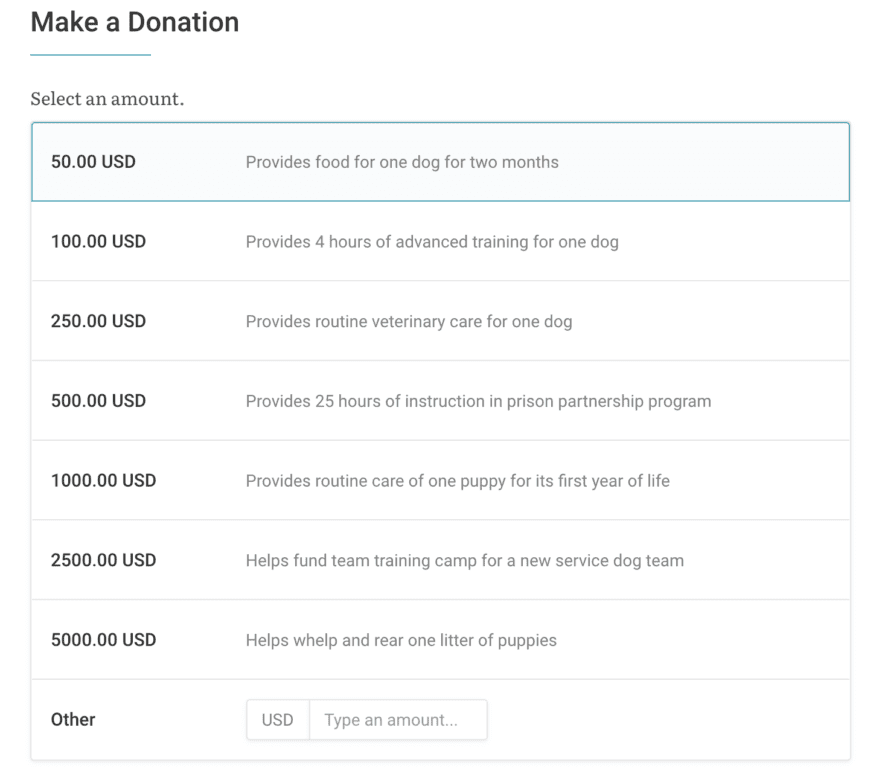
Donation tiers on CauseVox
4. Clear Call to Action (CTA)
Just like the climax of a story, your donation page should build towards a clear and compelling call to action. Ensure that the donate button stands out, try playing with different colors and placement on the page to see what drives the most donations. Make sure that your donate button is always easily accessible to those on your website (especially the mobile view). Bottom line: Make it incredibly easy and clear for people to give.
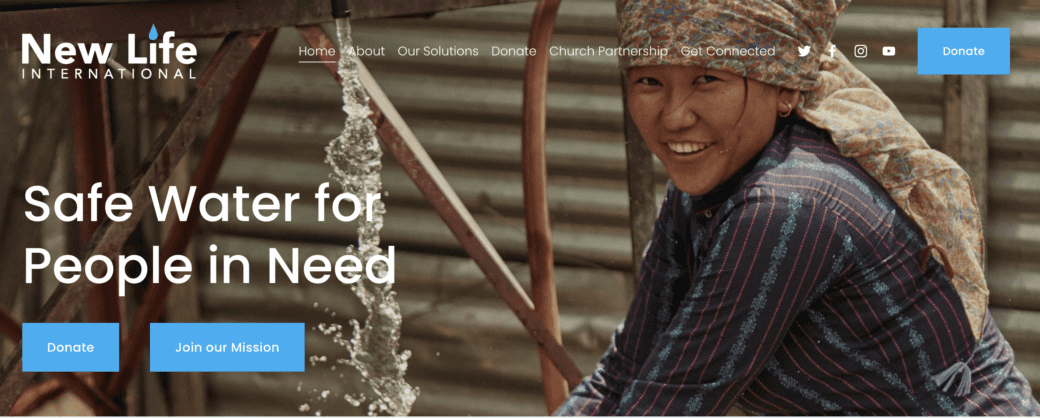
5. Branded And Beautiful Design

CauseVox branded donation page
The impact of a branded donation page on fundraising results is substantial—76% of donors are more likely to contribute on a professional, branded donation page. With the CauseVox site editor, you have the tools to craft your perfect page without any design or tech experience. This user-friendly platform empowers you to make quick changes, efficiently manage your fundraising sites and donation pages, and preview all adjustments in real time. The design is crafted for fundraisers of any background or experience level to seamlessly harness the power of storytelling, allowing you to raise more money with less hassle.
In crafting the donor experience on your donation page, remember that you’re inviting donors into a narrative larger than themselves. Through storytelling elements, personalized engagement, and a visually compelling design, your donation page becomes a canvas where donors play an integral role in authoring the next chapter of your impactful story.
Start Building Your Story Centered Fundraising Campaign Today
We know that in the nonprofit world it feels like there is never enough time in the day, and while the work is deeply rewarding, we know it can be exhausting and overwhelming. We can empathize because we’ve been there, which is why CauseVox created a clunk-free fundraising software that helps you get more donors in less time.
Start building your story-centered fundraising campaign today!
Editor's Picks
Ultimate Guide To Peer-to-Peer Fundraising
Customer Story: Spur Local Raises Over $1M With Their Give Local Campaign
Fundraising Strategies for Nonprofits: Craft the Best Approach for Your Organization
Create a Killer Fundraising Plan - Best Practices, Strategies, & Downloadable Template



